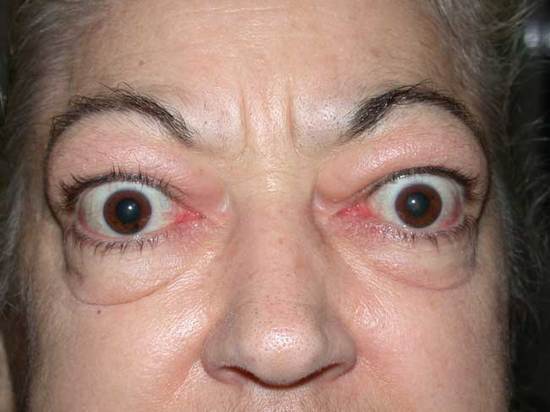The thyroid is a butterfly-shaped gland located in the throat. It sits just below the voice box (larynx) and in front of the windpipe (trachea). Graves’ disease is an autoimmune condition where antibodies are created against the patient’s own thyroid, skin, eye and its surrounding tissues (the orbit). Thyroid eye disease (TED) is the most common orbital disease, occurring in up to half of all cases of Graves’ disease. Women are more likely to be affected by TED, at a ratio of 4:1, and it usually appears in their 30s or 40s. Swelling in the surrounding tissues can lead to protrusion of the eyeball (proptosis), retraction of the eyelid, turning of the eye (“lazy” eye), and damage to the optic nerve. These manifestations impair vision, and additionally have negative psychosocial impacts due to the overt nature of the physical changes.

Current treatment plans begin in the active phase of disease with conservative management or a high-dose drug regime delivered intravenously over 12-weeks. Once the active phase is complete and the condition stabilizes, surgery can be performed on the tissues surrounding the eye to reduce protrusion and pressure on the eye, correct turned eyes, and repair eyelids. Despite the medical and surgical success of these treatments, it is common for patients to continue to be negatively affected by residual disability and facial differences which impacts their everyday life. A more thorough understanding of the disease pathway was required to find new drug targets to reduce overt physical changes before they occur (or reverse them once they had occurred).

Recent research has led to identification of one such new drug target and the subsequent production of a new drug, which is already approved for use in the USA. However, it is currently only approved for intravenous delivery, meaning that the drug is carried by the bloodstream to all sites in the body, therefore carrying a high chance of side effects by acting on tissues other than just those affected by TED. Our research project investigates methods for targeted application of the new drug to reduce side-effects.